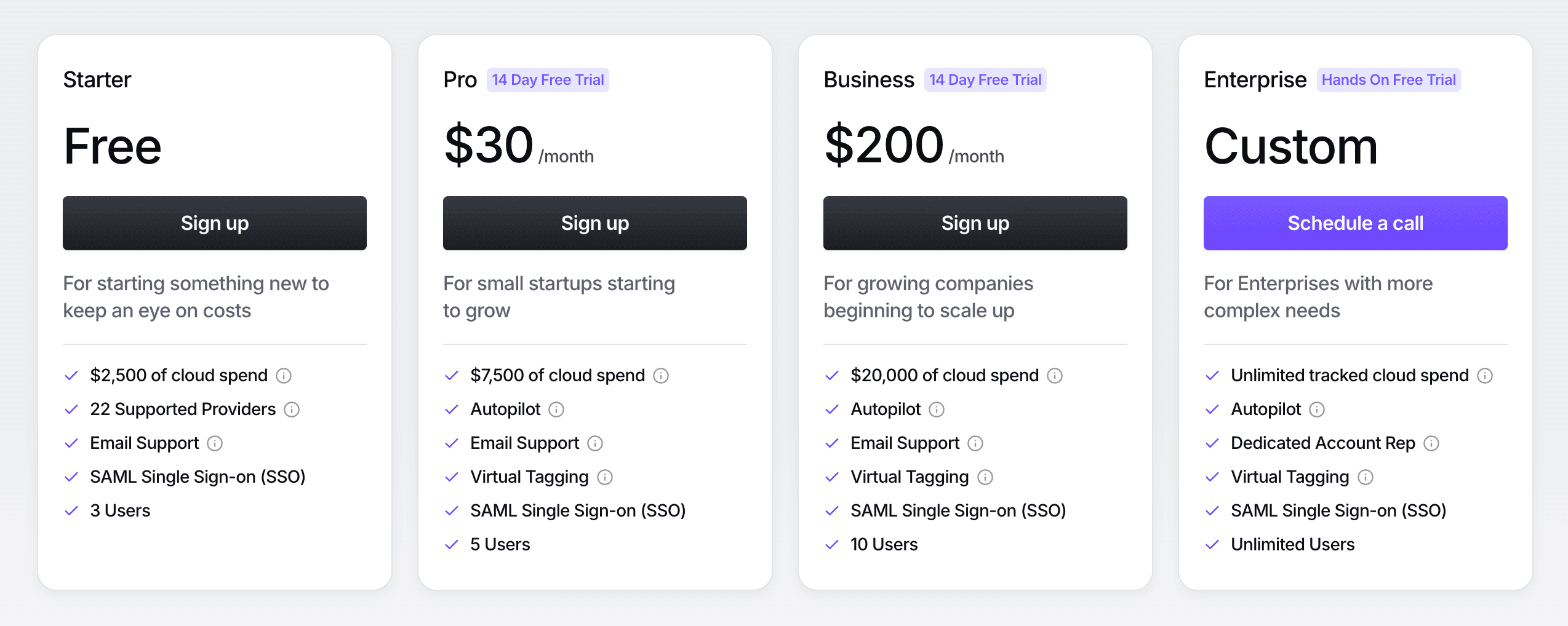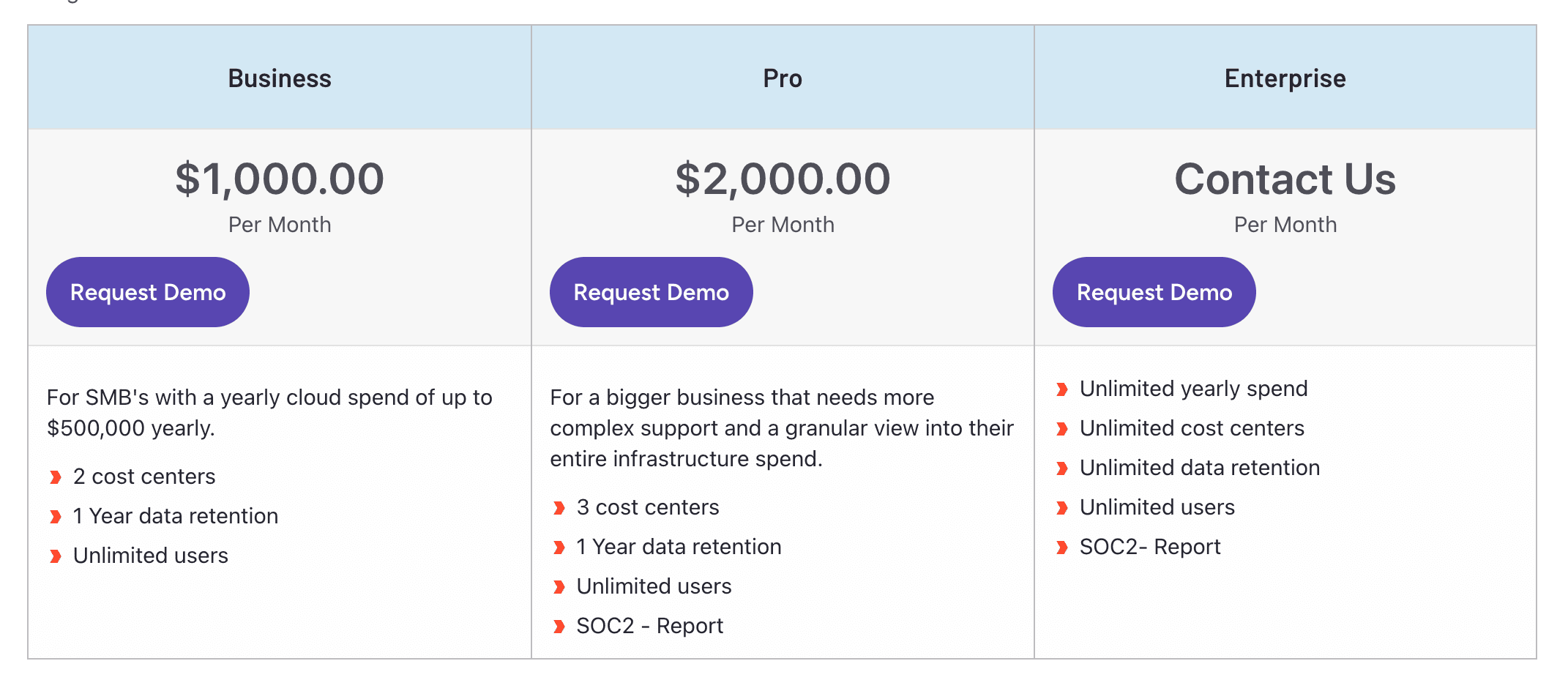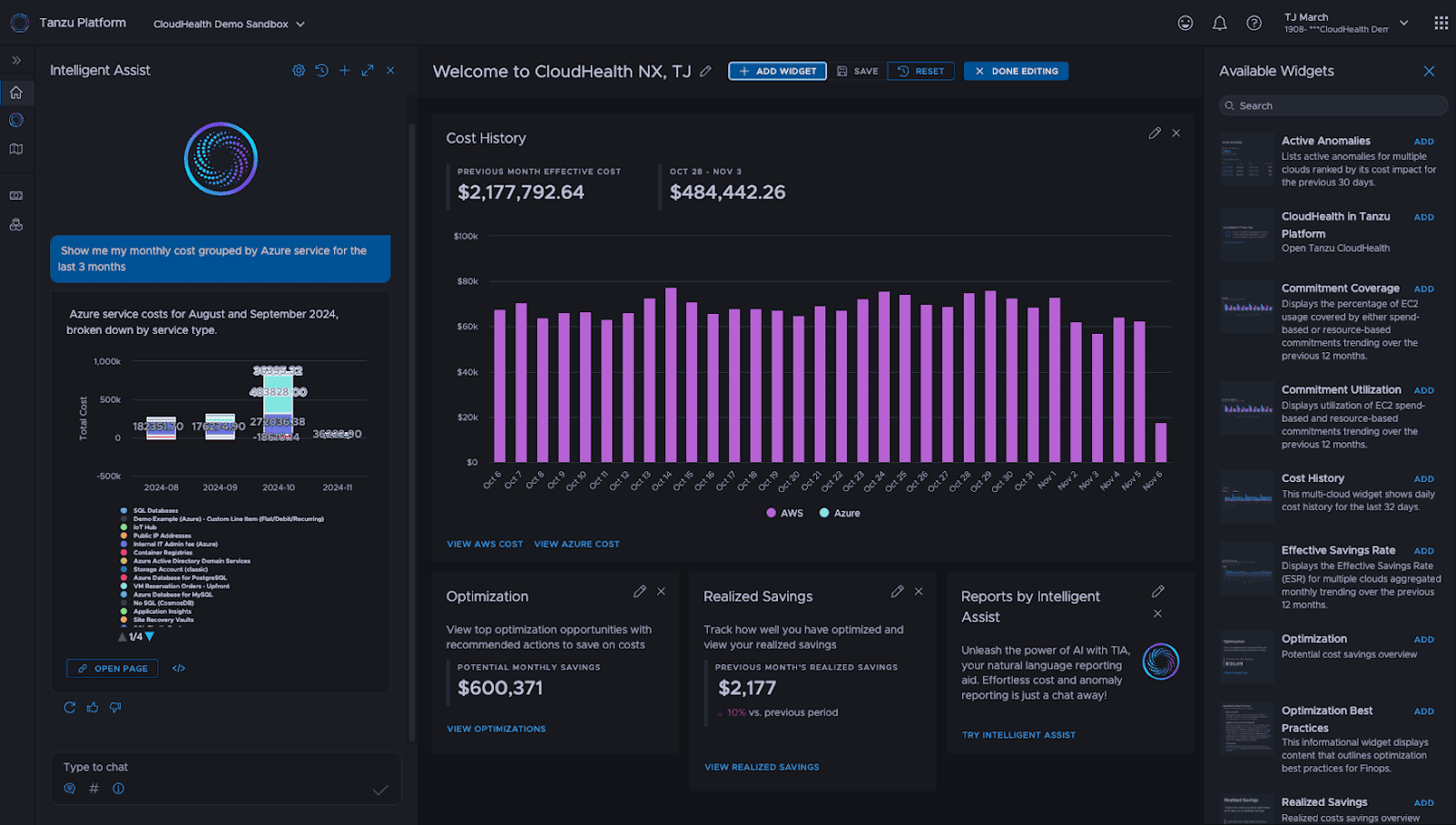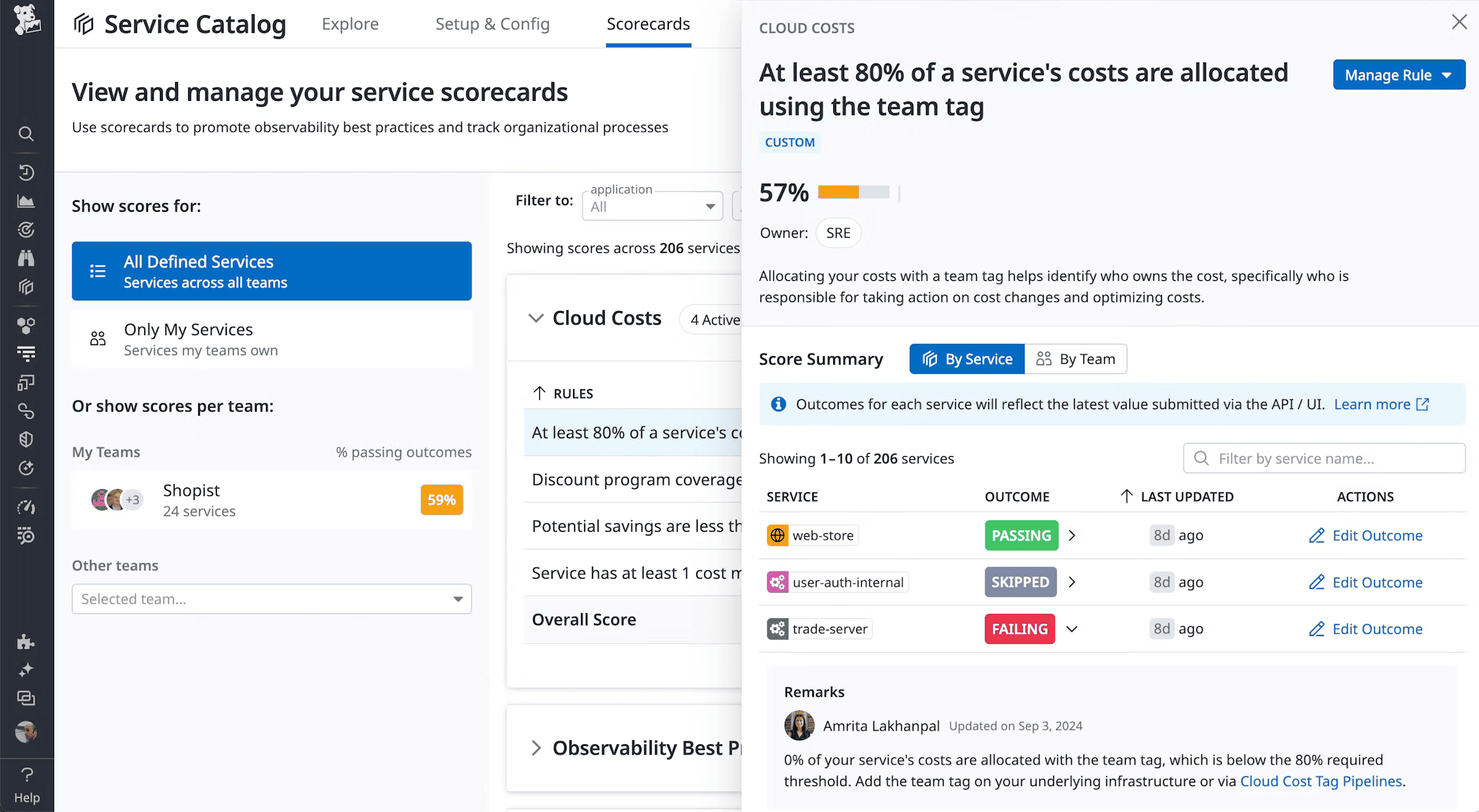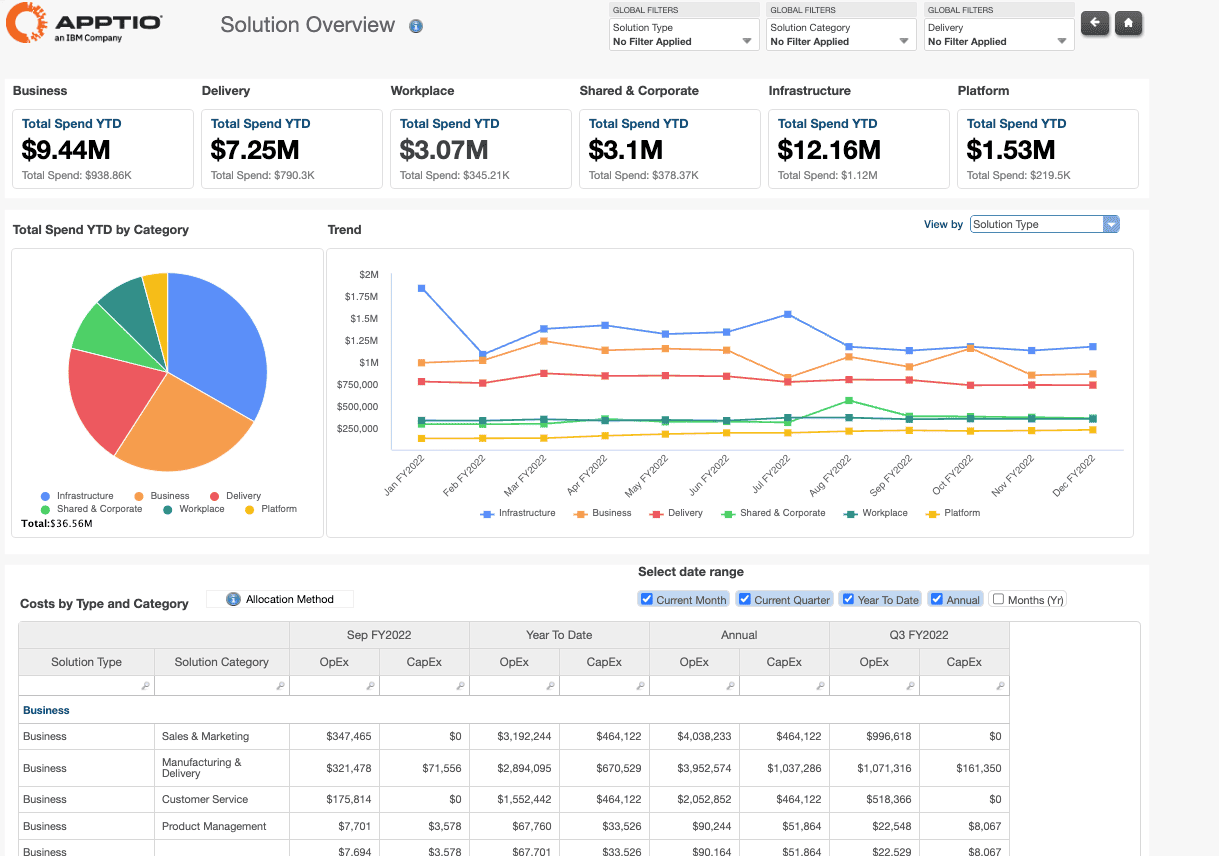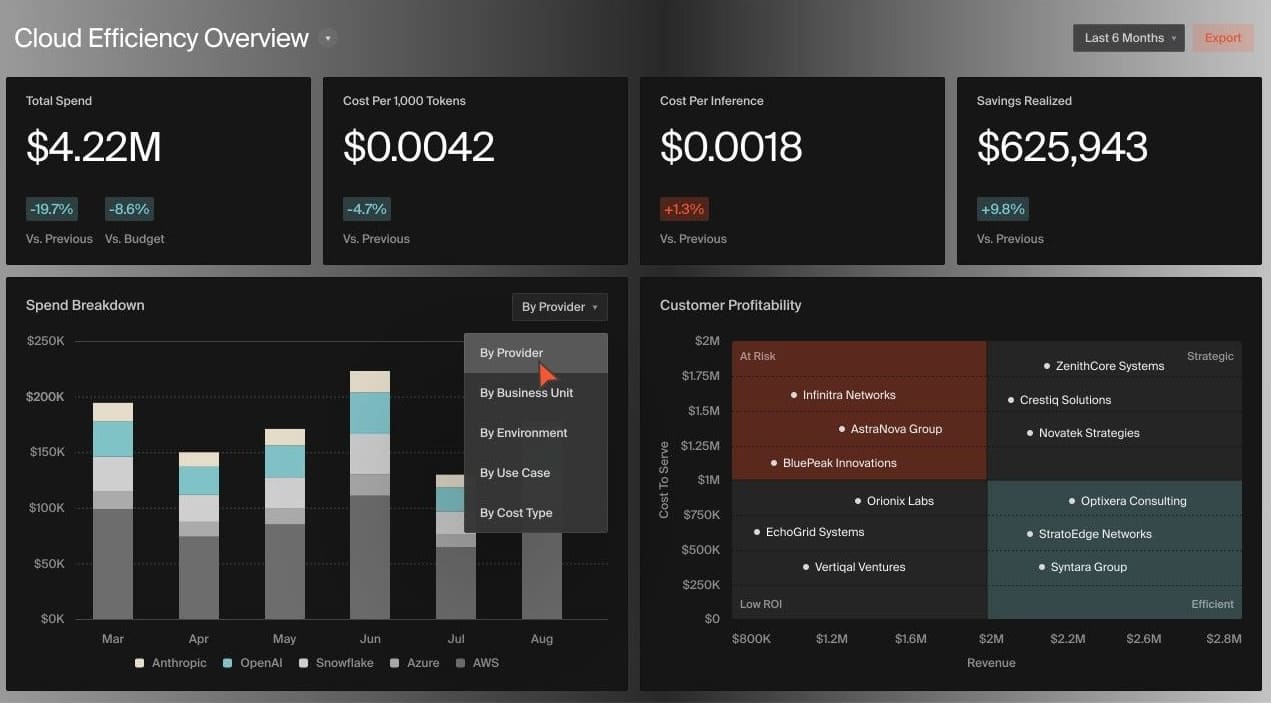Cloud costs are going up faster than ever, but visibility isn't keeping up.
Even experienced FinOps teams have trouble answering simple questions like "Who is responsible for this spending?" or "Why did our AWS bill go up so much last month?" When resources automatically scale across many environments, it can be hard to figure out how much each one costs, which can make optimization a guessing game.
That's where software for cost allocation comes in.
It links raw billing data to the business context, so companies can see how much they spend on the cloud by teams, projects, or apps. FinOps professionals don't get one big bill every month; instead, they get a clear breakdown of where every dollar goes and who is responsible for it.
In this guide, we talk about the most effective cloud cost allocation software that is available right now. You'll learn how top cost allocation tools help FinOps teams make things more accountable, tag things automatically, and see everything happening in real time across AWS, Azure, and Google Cloud.
By the end, you'll know which solution is best for your level of cloud maturity and governance needs, whether it's a simple analytics tool or an enterprise-grade platform.
How to choose the best cloud cost allocation software?
It’s not only about nice dashboards when it comes to choosing the best cloud cost allocation tool. In day-to-day FinOps work, accuracy, automation, and the ability to work with several clouds make a big impact.
To help FinOps professionals get the most out of this guide, we focused on the most typical problems that teams have while controlling cloud spending:
- Tagging automation: Can the tool find, enforce, or fix missing cost tags on its own in different environments?
- Multi-cloud normalization: Does the platform combine and normalize cost and usage data from AWS, Azure, and GCP into one unified financial view?
- Dashboards and analytics: Can both engineering and finance teams use the information to make decisions?
- Chargeback readiness: Does the platform enable showback and chargeback models with explicit ownership mapping?
Multi-cloud capability proved to be the real differentiator. As a FinOps professional wrote on Reddit:

This shows a typical problem: most allocation platforms work well in one environment but have trouble making all three work the same way.
Therefore, we compared the tools based on their capabilities in areas such as multi-cloud allocation, data normalization automation, and support for FinOps processes (discovery to chargeback).
Whether you're in charge of a simple single cloud or a sophisticated hybrid infrastructure, this piece will show you what’s the best cloud cost allocation tool for your needs.
Cloudaware
Capterra: ★★★★☆ 4.5/5
Trial days: 30
Best for: mid-size and enterprise operating multi-cloud environments that need unified cost allocation
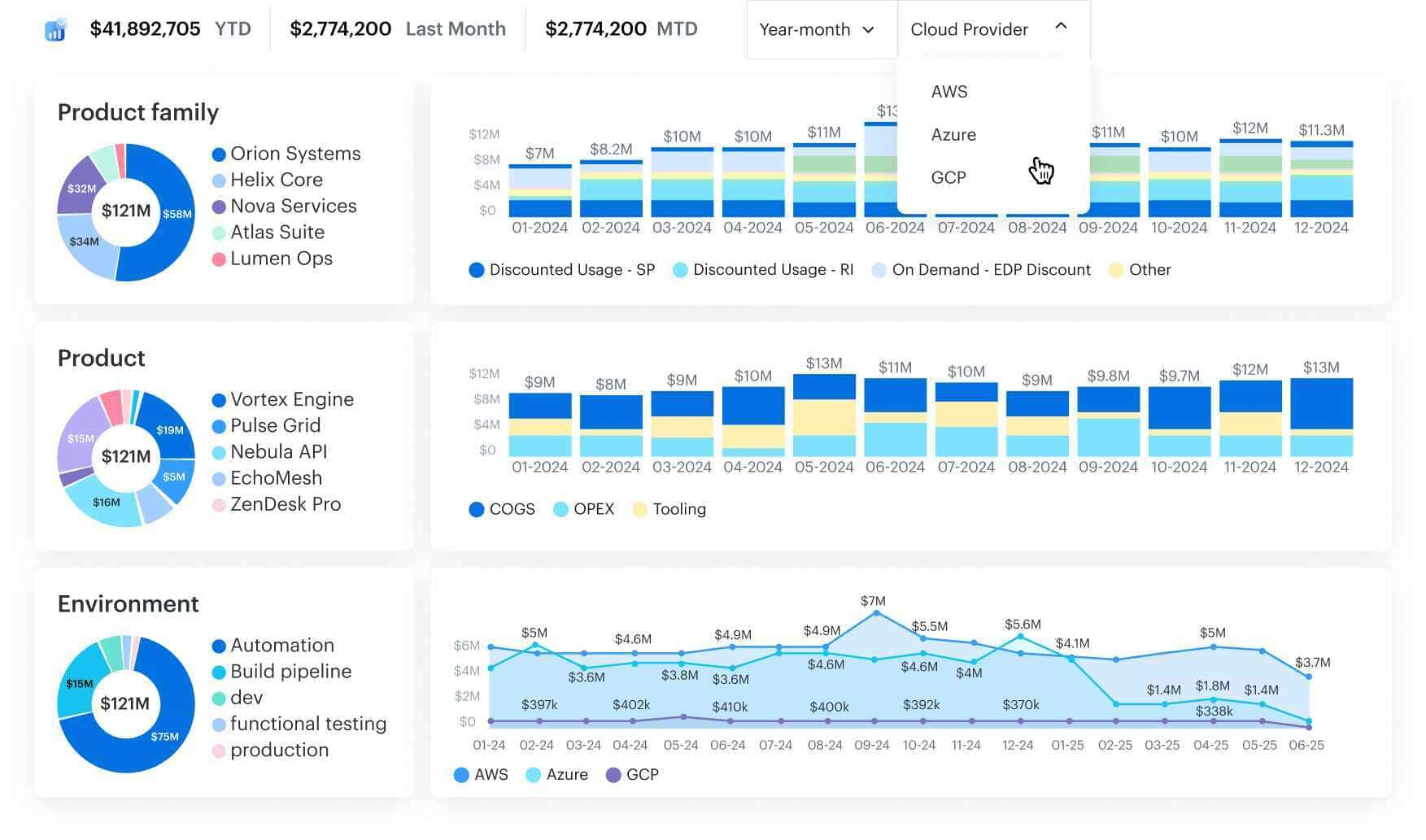
Cloudaware is a single FinOps platform that brings together cloud discovery, a CMDB, and real-time analytics to provide you full cost visibility across AWS, Azure, Google Cloud, Alibaba Cloud, and Oracle environments.
Cloudaware doesn't just keep track of total spending; it also shows who owns it and why. The platform keeps collecting and organizing billing data, and then it connects each dollar to the right business service, owner, or environment.
The CMDB automatically maps relationships between CIs, connecting resources like VMs, Kubernetes clusters, and SaaS subscriptions to applications and services they support. This connection turns raw billing data into useful allocation insight, so that finance and engineering teams can see how much they spend on each cost center, service, or app in one place.
By combining CMDB-driven allocation logic with multi-cloud normalization and shared-cost handling, Cloudaware visualizes the cause-and-effect of cost changes, flags untagged resources, and ties every spend variation to the operational event that triggered it.
Cloudaware cloud cost allocation features
- Integration of billing and CMDB data to link every cost to its owner, service, and environment.
- Continuous discovery of all cloud resources across AWS, Azure, Google Cloud, Alibaba Cloud, and Oracle.
- Automated tag validation and enforcement for consistent cost attribution.
- Flexible rule-based allocation for shared or untagged resources.
- Real-time, no-throttling cloud cost allocation dashboards with multi-cloud filtering and chargeback views.
- License and contract visibility for allocating software and SaaS costs across departments.
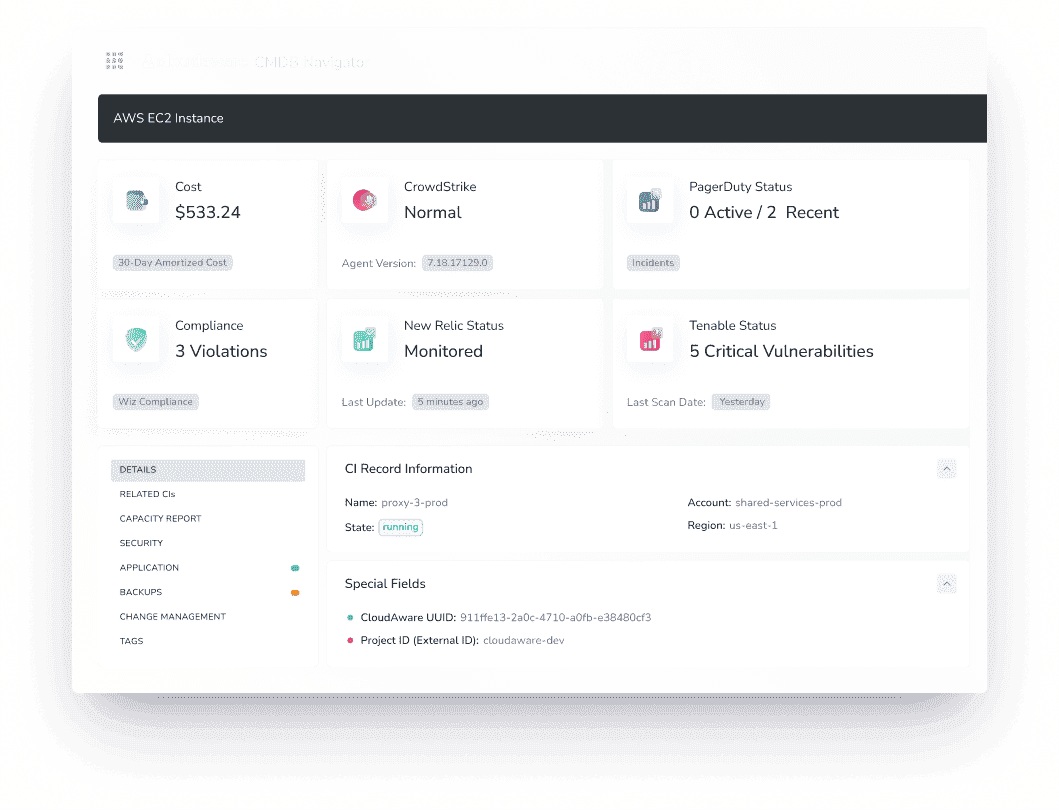
Pricing
Cloudaware doesn’t do flat licensing. Its pricing scales with what you actually manage.
The CMDB is where actual FinOps work starts, and that's where the platform starts. Without a CMDB, there is no real cost narrative. The model keeps track of everything you really operate, such as servers, services, databases, disks, tags, and owners, and links each dollar to a specific asset or application. Thereafter, prices stay basic and easy to guess.
This is how it works:
CMDB Base: Charges about $0.008 per CI per month.
→ For example, maintaining 100 cloud servers would cost about $400 per month for the CMDB.
FinOps Module: For an extra 20% of your CMDB expense, it adds automatic cost allocation, optimization, and reporting features.
→ In the same configuration, $400 for CMDB and $80 for FinOps add up to $480 a month.
You may try out all of FinOps' capabilities, including cloud cost allocation dashboards, for free for 30 days. This is a great way to test automated tagging, reporting, and chargeback workflows before they go live.
Pros and cons
✅ True multi-cloud coverage (AWS, Azure, GCP, Alibaba, Oracle) with unified reporting. G2.
✅ Deep CMDB integration that links infrastructure metrics, operational context, and financial data.
✅ Dashboards are really flexible and give you real-time chargeback information.
✅ Great customer support and onboarding system. G2.
⚠️ You need to set up the system first to set rules for tagging and allocating. GetApp.
⚠️ Custom pricing can be opaque for non-enterprise customers
Vantage
G2: ★★★★☆ 4.7/5
Trial days: 14
Best for: developer-led teams and cloud architects seeking intuitive dashboards, team-based cost visibility and allocation control
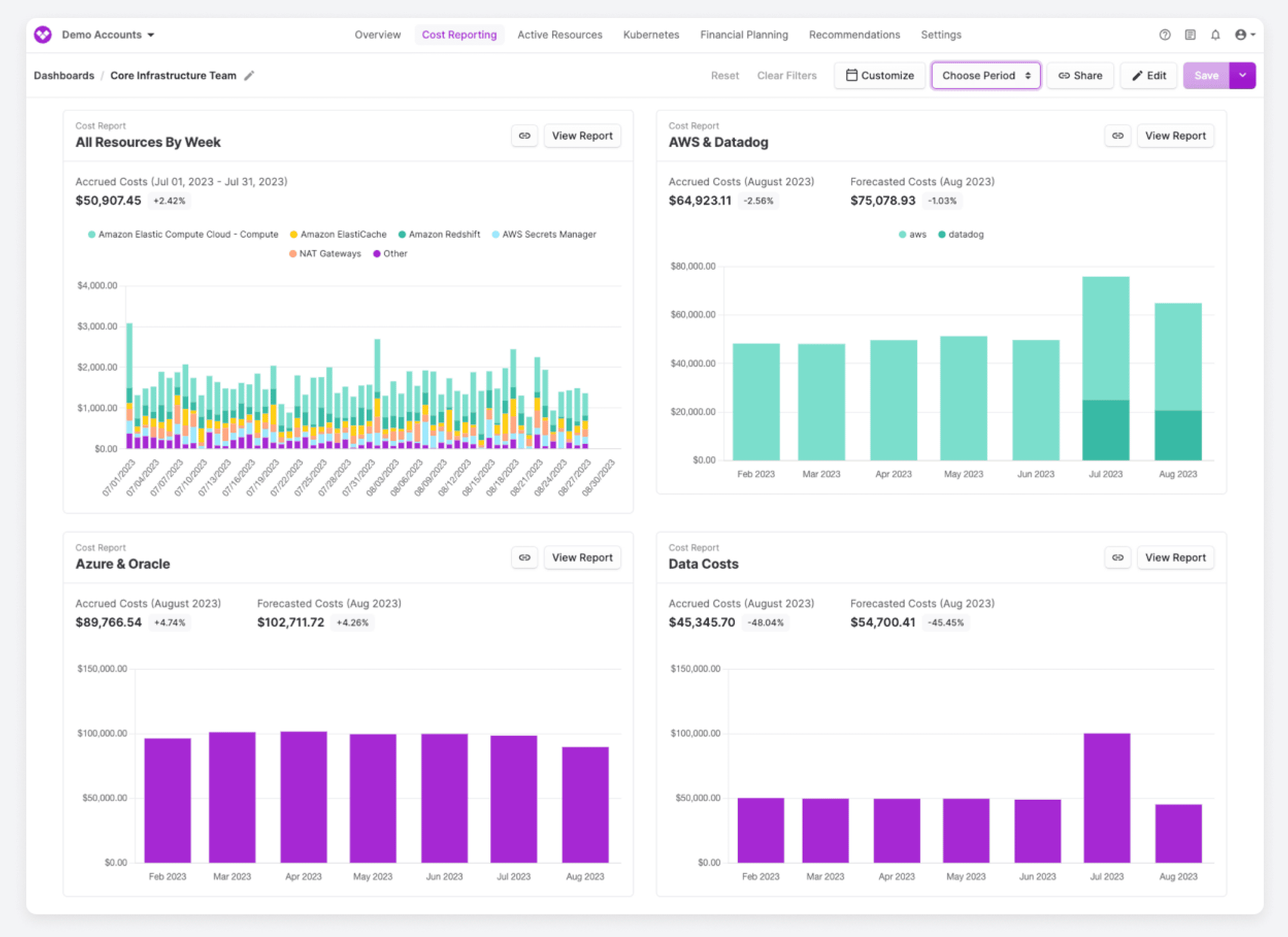
Vantage is a lightweight platform that makes it easy for developers to monitor and allocate cloud costs.
It lets engineering and finance teams see how much they are spending on the cloud in a way that is easy to understand. Vantage is meant to make FinOps easier to use without much preparation. It helps teams quickly find out which AWS, Azure, or GCP services, namespaces, or projects are costing them the most.
The Vantage system for cloud cost allocation combines billing data from different sources and lets teams decide who owns what by using customizable tags and cost divisions. This design makes it easy to hold people responsible without having to do a lot of work to set it up.
Vantage cloud cost allocation features
- Virtual tagging and segmentation can help you spend money even when you don't have native tags.
- Cost analysis by teams and projects across many cloud accounts and providers.
- Kubernetes visibility with cost attribution by namespace, label, and workload
- Dashboards for developers that let them filter data in real time and do their own analysis.
- Terraform and API integration for managing Vantage cloud cost allocation features as code.
Pricing
Vantage uses a transparent tiered pricing model.
- Free plan (Up to $2,500/month): free
- Pro plan (up to $7,500/month in managed spend): $30/month
- Business plan (up to $20,000/month in spend): $200/month
- Enterprise plan: custom-quoted for high-scale or multi-cloud environments. Instead of paying per seat, you pay based on the amount of cloud usage. This keeps costs predictable as your infrastructure grows.
Pros and cons
✅ Intuitive, modern dashboards built for engineers rather than finance teams.
✅ Flexible virtual tagging that compensates for incomplete native tags.
✅ Simple, scalable pricing and fast onboarding compared to enterprise FinOps tools.
⚠️ Less mature for very large or complex multi-cloud environments. Reddit.
⚠️ Few advanced governance features, like enforcing policies or keeping track of changes.
⚠️ Not as many integrations as other FinOps platforms.
Read also: 13 Cloud Cost Optimization Best Practices to Use in 2026
Finout
G2: ★★★★☆ 4.5/5
Trial days: 14
Best for: teams that need to see all of their cloud billing in one place and see how much they spend on SaaS and how much they share costs.
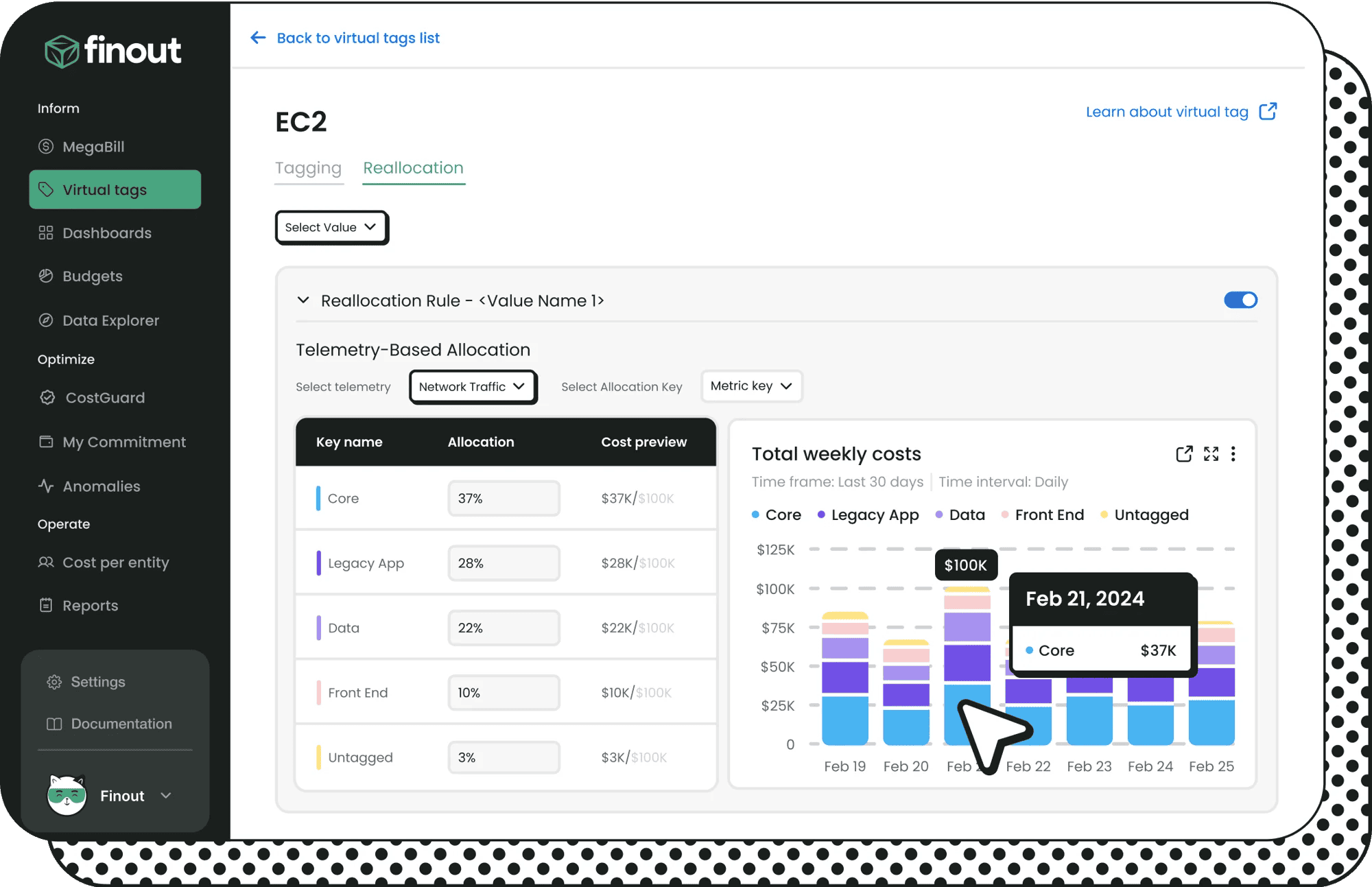
Finout makes it easier to keep track of cloud costs by combining cloud cost allocation software with a single pricing layer for both SaaS and cloud infrastructure services. The "MegaBill" dashboard lets teams see how much they are spending on AWS, Azure, GCP, Kubernetes, and SaaS platforms all in one place.
The platform is mostly about shared cost attribution and making each team responsible for its own costs. It uses telemetry data and virtual tags to break down spending that isn't tagged or is overhead. It also makes detailed FinOps dashboards that are helpful for both finance and engineering teams.
Finout cloud cost allocation features
- Virtual Tagging: Add tags to resources dynamically, even if they don't have any native tags.
- Shared-Cost Reallocation: Apply telemetry or custom rules to divide shared infrastructure bills across teams or projects.
- Unified "MegaBill" view: See all of your multi-cloud and SaaS spending data in one dashboard.
- FinOps Dashboards: Self-serve dashboards bridging finance and engineering, with anomaly detection and forecasting.
- Data Layer/Ingestion: Agentless integration of cloud providers and services, enabling detailed cost and usage types standardized.
Pricing
Pricing tiers are based on how much you spend on the cloud each year and what features you need. Instead of unclear per-seat licensing, there is a clear usage-based model.
- Business (for SMBs with a yearly cloud spend of up to $500,000 yearly): $1,000/month.
- Pro (for a bigger business that needs more complex support and a granular view into their entire infrastructure spend): $2,000/month.
- Enterprise (for businesses that need an unlimited cloud spend each year): Custom pricing.
Pros and cons
✅ Powerful cost-allocation layer with virtual tags and shared-cost reallocation. G2.
✅ Unified platform spans cloud infrastructure and SaaS spend.
✅ Self-serve dashboards and data layers make it easier for both engineers and finance teams to adopt.
⚠️ For very granular feature-cost attribution (e.g., per-feature or per-customer cost) tool may require more setup compared to dedicated product-cost tools. Reddit.
⚠️ Tag-based setups work but limit visibility. G2.
⚠️ Lacks some dashboards and views, making common metrics harder to monitor. G2.
Read also: 10 Cloud Cost Optimization Benefits or Why It’s a Must In 2026
VMware Tanzu CloudHealth
G2: ★★★★☆ 4.1/5
Trial days: available
Best for: enterprise FinOps teams focused on governance, budgets and multi-cloud accountability
VMware Tanzu CloudHealth is a mature cloud financial management platform that lets you manage budgets and governance across AWS, Azure, and GCP systems. It’s aimed at businesses that need strict accountability, such as enforcing budget rules, keeping track of spending across many clouds, and linking it to teams, business divisions, or projects.
Because it has a history of working with big businesses, the solution offers large-scale multi-cloud cost management, combines cost allocation and chargeback models, and includes policy-driven control over cloud spending.
This makes it a strong candidate for the best cost allocation tool for saving money in the cloud while still keeping an eye on their budgets and governance.
VMware Tanzu CloudHealth cloud cost allocation features
- Multi-cloud visibility: AWS, Azure, GCP.
- Automated chargeback and cost allocation: Cost reallocation APIs let you move money between teams, business units, or product lines.
- Policy management and budget enforcement: Set limits and triggers to make sure that the rules for spending and governing are followed.
- Custom reports: Get reports on costs, how the budget compares to the real thing, and how trends are changing across teams and clouds.
- Kubernetes with container-workload support: the ability to break down container costs by team or namespace (however, reports say there are certain limits).
Pricing
VMware doesn't make the prices for CloudHealth public, although most deployments use the spend-tier model from AWS Marketplace and partner offerings.
Some reviews suggest that pricing begins at approximately $20,000 annually for smaller deployments. However, precise figures differ based on the scope and integration requirements.
Pros and cons
✅ Multi-cloud visibility and deep governance alignment. G2.
✅ Deep automation for chargeback, cost policies, and reporting workflows across AWS, Azure, and GCP. G2.
⚠️ Not enough price transparency, and enterprise quotes change based on how much you spend and how you set up your modules.
⚠️ Setting up cost allocation policies and data mapping is complicated and needs dedicated FinOps resources.
⚠️ You need to be disciplined about tagging and keeping your data really clean.
Datadog
Capterra: ★★★★☆ 4.6/5
Trial days: 14
Best for: engineering-led FinOps teams that want to correlate observability metrics with real-time cost data
Datadog's observability platform now has built-in modules for cost allocation and visibility that help teams connect cloud costs to performance metrics. The platform helps businesses understand which services and environments on AWS, Azure, and GCP contribute to their growth.
The platform is a great example of cost allocation software for engineering-driven businesses that want to see all of their monitoring and FinOps data in one place. Teams can see how much they spend on each service, container, or tag right in the same dashboards they use to keep an eye on their applications and infrastructure. They don't have to send billing data to another place.
Datadog cloud cost allocation features
- Unified billing and observability data view that connects cloud spending data with infrastructure metrics.
- Cost attribution by tag, namespace, and service for AWS, Azure, and GCP environments.
- Kubernetes cost mapping that tracks resource usage and translates it into per-team costs.
- Built-in anomaly detection to find unexpected spikes in spending along with performance data.
- Custom dashboards and APIs that expose features for integration with CI/CD or reporting tools.
Pricing
Datadog charges per host each month, dependent on how many modules you use.
- The Infrastructure Pro plan is $15 per host per month (paid once a year) and comes with the connectors, dashboards, and tagging features you need to keep track of costs.
- The Enterprise package costs $23 per host per month and comes with advanced analytics, machine learning-based anomaly detection, and longer retention.
The Cloud Cost Management add-on for Infrastructure Pro and Enterprise levels comes with the Datadog cloud cost allocation tools.
Depending on how much data you have, this usually costs between $5 and $10 per server per month. Container and serverless workloads, like AWS Fargate, cost $1 per job.
Pros and cons
✅ Seamless integration of observability and cost management within a single platform.
✅ Real-time dashboards and anomaly detection spot inefficient workloads quickly. Capterra.
✅ Strong Datadog cloud cost allocation capabilities, such as Kubernetes visibility and tag-based attribution.
⚠️ Prices go up quickly with more data and more active integrations, which might turn off smaller teams. G2.
⚠️ Financial reporting is not very detailed.
⚠️ Setting up advanced dashboards takes time and effort to provide detailed cost allocation on a large scale. Capterra.
Read also: Cloud Cost Forecasting: Build a Reliable Cloud Budget
Apptio Cloudability
G2: ★★★★☆ 4.4/5
Trial days: available
Best for: large enterprises integrating ITFM and FinOps, seeking enterprise-level chargeback and budget governance.
With Apptio Cloudability, businesses can see and control their technology spending at the enterprise level. It helps businesses combine IT financial management (ITFM) and FinOps to make sure that budgeting, showback, and chargeback are all correct across AWS, Azure, and GCP.
Apptio Cloudability makes it possible for finance and engineering teams to turn raw cloud bills into useful business insights by combining financial data with cloud usage metrics.
Cloud cost allocation capabilities let enterprises allocate shared, untagged, or cross-team costs through automated rules while maintaining full transparency across services and business units.
Apptio cloud cost allocation features
- Comprehensive integration for unified cloud cost ingestion with ApptioOne, Cloudability, and Datalink.
- Untagged and shared costs are automatically distributed by a policy-based allocation engine.
- SLA-driven visibility connects cloud spend to performance and business value streams.
- Forecasting and scenario modeling for chargeback and showback planning.
- Customizable dashboards and reporting.
- Workflow automation links cost variations to operational changes.
Pricing
Apptio Cloudability uses a custom enterprise-quote model that scales with total cloud spend, deployment size, and chosen modules.
Official pricing is not public, but enterprise implementations commonly range between $30,000 and $132,000 per year, depending on data volume and integrations.
Pros and cons
✅ Advanced features like policy automation and ITFM integration.
✅ Strong SLA visibility and multi-cloud governance for accurate chargeback. G2.
✅ A wide range of integration tools.
⚠️ Setting up and using FinOps can be challenging, so you need dedicated resources. G2.
⚠️ High licensing cost compared to lighter cloud cost allocation tools. Reddit.
⚠️ Reporting refresh cycles can be slower than in newer SaaS-native FinOps solutions.
Read also: How to use FinOps framework: Top 10 mistakes & their fix
CloudZero
Capterra: ★★★★☆ 4.5/5
Trial days: 14
Best for: SaaS and product-driven FinOps teams needing granular cost attribution and real-time visibility.
CloudZero is a FinOps platform that helps teams link every dollar of cloud spending to a team, customer, or product. It allows engineering and finance to communicate in the same language by converting cloud billing data into cost dimensions that reflect how your company really functions.
The platform shows great flexibility for businesses that require dynamic allocation at scale, according to the CloudZero cloud cost allocation evaluation.
With CloudZero cloud cost allocation capabilities, users can track usage-based expenditures back to ownership models and divide costs by product, team, or feature.
It transforms cloud cost management from a monthly reconciliation task into an ongoing feedback loop with its extensive integrations and configurable dashboards.
Cloudzero cloud cost allocation features
- Dynamic dimensions: spend is automatically grouped by product, customer, feature, or team
- Unified cost visibility: Integrations allow the transfer of data from AWS, Azure, GCP, Kubernetes, Datadog, and Snowflake.
- Dashboards: display cost information in real time alongside business KPIs.
- Shared costs allocation: adaptable rule sets for shared or untagged infrastructure elements.
- Automation and APIs: REST and CLI are used to expose features for CI/CD and BI tool integration.
Pricing
CloudZero follows a usage-based pricing model that scales with your cloud footprint and data volume rather than charging a percentage of your total spend.
Official prices aren't listed, but reviews on G2 and SaaSworthy give content regarding CloudZero’s pricing policy:
- Mid-sized businesses say they spend between $3,000 and $7,000 a month, depending on the number of integrations, the amount of data being ingested, and the amount of historical data being kept.
- Larger FinOps teams that manage multi-cloud or SaaS portfolios say that prices go up slowly as cloud usage goes up, but they are still more predictable than "percentage-of-spend" licensing.
- CloudZero lets you pay monthly or yearly, and if you spend a lot, you can get discounts.
Pros and cons
✅ Strong capabilities of CloudZero for allocating cloud costs to products, customers, and teams. G2.
✅ A deep integration ecosystem and dashboards that can be changed to show cost information.
✅ Does a great job of breaking down cloud costs and reporting Kubernetes costs. Reddit.
⚠️ Limited real-time data sync; billing data may not be as up-to-date as usage data. G2.
⚠️ You still need to set up manual tagging before automated rules can work properly.
⚠️ Advanced automation and dashboards are better for FinOps teams that have been around for a while.
Read also: 10 Cloud Cost Optimization Tools That Actually Reduce the Bill in 2026
Comparison table: best cloud cost allocation tools 2025
| Solution → Tool ↓ | Cloudaware | Cloudability | CloudZero | Finout | Vantage | CloudHealth | Datadog |
|---|---|---|---|---|---|---|---|
| Multi-Cloud Coverage | ✅ | ✅ | ✅ | ✅ | ✅ | ✅ | ✅ |
| Tagging & Shared-Cost Automation | ✅ | ✅ | ✅ | ✅ | ✅ | ✅ | ✅ |
| CMDB / Ownership Context | ✅ | ✅ | ⚠️ | ⚠️ | ⚠️ | ⚠️ | ⚠️ |
| Kubernetes Cost Allocation | ✅ | ✅ | ✅ | ✅ | ✅ | ⚠️ | ✅ |
| Dashboards & Visualization | ✅ | ✅ | ✅ | ✅ | ✅ | ✅ | ✅ |
| Chargeback / Showback | ✅ | ✅ | ⚠️ | ⚠️ | ⚠️ | ✅ | ⚠️ |
| Governance & Policy Management | ✅ | ✅ | ⚠️ | ⚠️ | ⚠️ | ✅ | ⚠️ |
| Pricing Transparency | ✅ | ❌ | ⚠️ | ✅ | ✅ | ❌ | ✅ |
| Ease of Implementation | ✅ | ❌ | ⚠️ | ✅ | ✅ | ❌ | ⚠️ |
Key Takeaways
- Cloudaware is the most well-rounded FinOps platform overall. It combines deep CMDB integration, policy-based automation that connects directly to Jira and ServiceNow workflows, and complete multi-cloud coverage.
- Apptio Cloudability leads in enterprise governance. It is the best option for businesses that require chargeback accuracy, SLA tracking, and cost allocation that is in line with business value because of its ITFM foundation.
- CloudZero and Finout dominate in cost visibility for teams focused on product development. Finout simplifies shared-cost allocation by combining cloud and SaaS costs into its "MegaBill," while CloudZero provides SaaS companies with fine-grained visibility by product, feature, or customer.
- VMware Tanzu CloudHealth wins at governance. It’s ideal for large businesses that prioritize compliance, policies, and budgets across hybrid or multi-cloud infrastructures.
- Datadog and Vantage are notable for their usability and speed. While Datadog brings cost insights directly into observability, allowing engineers to act on both performance and spend data in one location, Vantage provides developer-led FinOps teams with quick setup and user-friendly dashboards.

